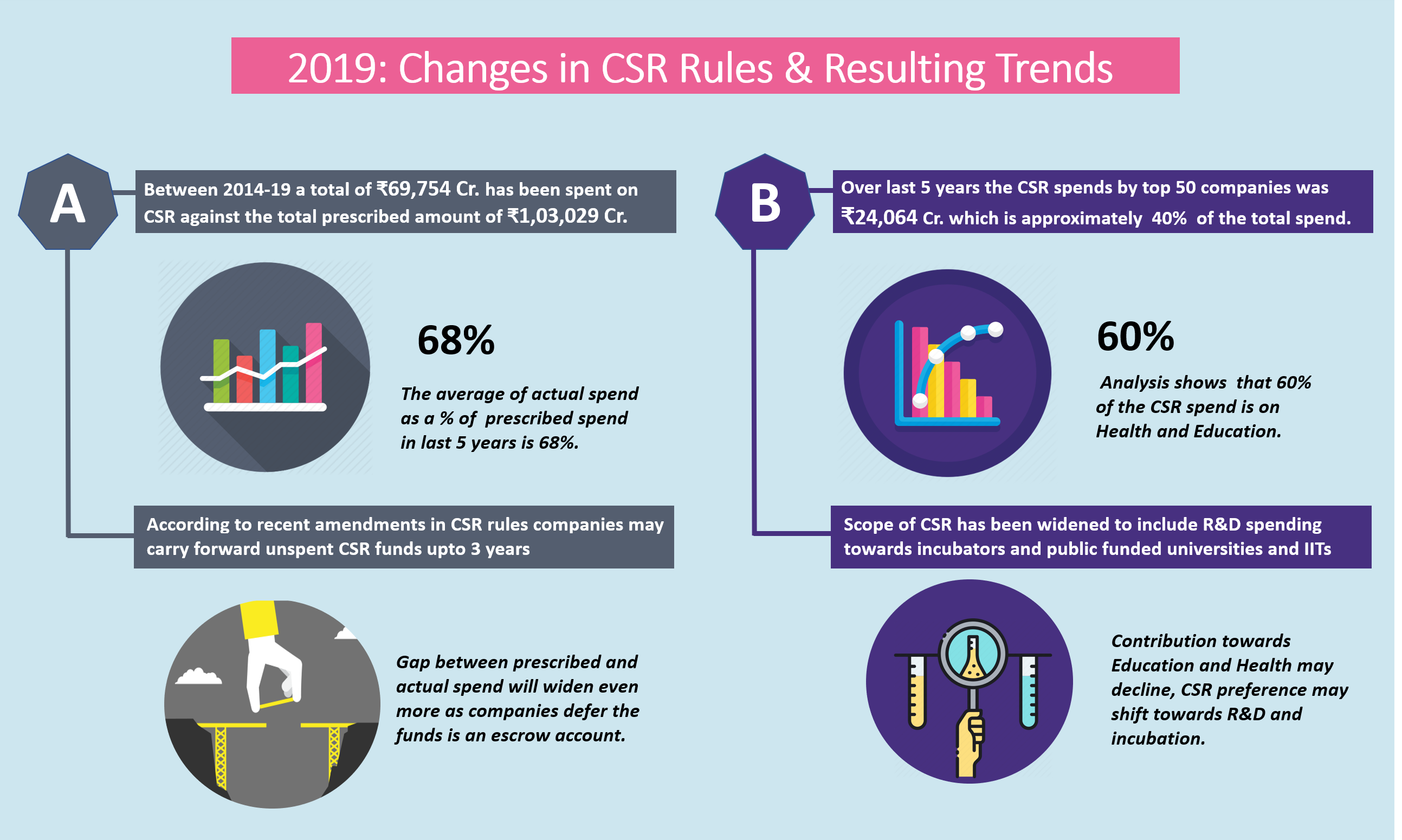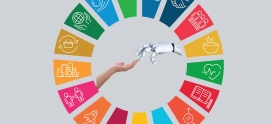CSR Landscape & Path Ahead
It’s been five years since the Companies Act made it mandatory for corporates to contribute 2% of their profits to social development. SoStakes has been analysing the CSR trends in India since 2015. The purpose of this article is to analyse the expenditure pattern of the corporates towards CSR activities and understand the direction of CSR Trends. Every year, our sample consists of top 50 CSR contributors which include Public and Private companies as well as PSUs. We find that these top 50 companies form about 40% of the total CSR spend, and we have used this data to analyse sectoral trends in CSR.
Through our article, we try to answer some of the common questions like – Where is India CSR moving? Are Indian companies being more focused with their CSR spends or experimenting in new areas?
This article analyses the CSR trends in three ways:
- CSR spend in five years.
- Analysing sectoral spends and trends from last 5 years and comparing spends from 2018-19 with the CSR spends of five-year.
- CSR Amendments 2019 and its impact in coming future.
A glance at the five-year CSR trends
Corporate Social Responsibility has come a long way since 2013. Over the five years, ₹ 69,754 Cr. has been spent by Corporates against the prescribed spend of ₹103,029 Cr. Following are the trends for actual v/s prescribed spend on a year on year basis: –

Figure 1: Prescribed v/s Actual Spend (Source: CSR Box, August 2019[1])
Over 5 years, 68% of the CSR funds have been spent as against the prescribed spend. Some of the years show a bigger gap between prescribed to actual spend and this could be due to a few companies defering the expenditure to the following year due to lack of a good project or delayed payments based on progress of project etc.

Figure 2: CSR spend on most preferred sectors over the five years (Source: CSRBox Report)
In the past 5 years, the most preferred sectors for CSR spends are illustrated in Figure 2. It is evident that about 65% of the total CSR funds was spent on Education and Health.
Analysis of the CSR Expenditure of top 50 companies
From our analysis of CSR spending patterns of top 50 companies in the last 5-year, 82% has been in the domain of Health & Sanitation, Education, Rural and Environment. CSR spent on other sectors like sports, women empowerment and disaster relief, accounts for 18% of the overall spend. From our analysis, we see that two sectors Education and Health & sanitation have been predominant and account for around 60% of the total expenditure. Overall, we see that the focus on Education is higher (32%) followed by Health & Sanitation (26%).
| Year | Total spend | Education | % | Health | % | Total Education & Health (%) |
| 2015-16 | 5365 | 1485 | 28 | 1817 | 34 | 62 |
| 2016-17 | 5515 | 1985 | 36 | 1072 | 19 | 55 |
| 2017-18 | 6100 | 1869 | 31 | 1476 | 24 | 55 |
| 2018-19 | 7084 | 2404 | 34 | 1794 | 25 | 59 |
| Total | 24064 | 7743 | 32% | 6159 | 26% | 58% |
Table 1: Two most preferred sectors by the 50 companies over 4 years (analysis by SoStakes)
If we look at 2018-19 trends, the top 50 companies have spent 81% of their CSR funds on Health & Sanitation, Education, Rural and Environment. The spend on Education is 34% and on Health & Sanitation, 25% in the current year. CSR spend on other sectors like sports, women empowerment and disaster relief, accounts for 19% of the overall spend.
Amendments in scope of CSR in 2019 and how it may impact future trends.
In July 2019, an amendment was made to the law whereby any unspent CSR amount will have to be deposited into an escrow account, 30 days prior to the end of that financial year. This amount will have to be spent within three years from the date of its transfer (which makes the spending term for the CSR amount of any financial year upto 4 years including the current financial year). With this new rule companies may carry forward their CSR budgets upto 3 years, in which case we feel that the current gap of 32% between actual and prescribed spend as discussed earlier in the article, may actually widen further, because companies may defer the spend and transfer into an escrow account. In case if the corporate is unable to utilise the CSR spend in the given timeline of next 3 financial years, the unutilized CSR amount will be transferred to government funds enlisted in Schedule VII.
There has also been a new addition on the scope of CSR. Historically its been seen that Indian companies have been spending minimal amount (approximately 1% of GDP) on Research and Development activities. With the new addition to the scope of CSR, 2% can be spent on incubators funded by Central or State government or any agency of a central or State Public undertaking. Contribution to public-funded universities, to IITs and other research bodies, department of science and technology, Ministry of electronics and IT, for research, science and technology, engineering and medicine, can be counted as CSR spend (no formal notification has come out from MCA yet). This move could give a much-needed push to the Research & Development work in India, however, there is no mention of this being directed only towards Social Research and Sustainable Development. Also, this widening of scope may have an adverse impact on funding of current important focus areas like primary education and health, companies may now prefer to contribute towards higher education institutions for R&D and incubation. It remains to be seen how the impact of these changes pan out in the coming years, for CSR trends in India.
Sources
[1] https://csrbox.org/India_CSR_report_India-CSR-Report–Five-Years-and-INR-100,000-Crore_64




